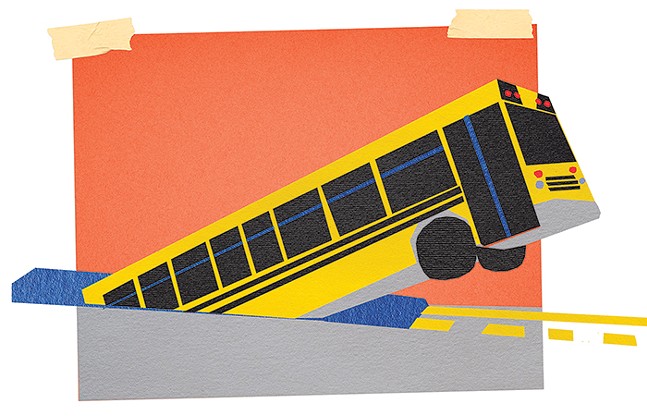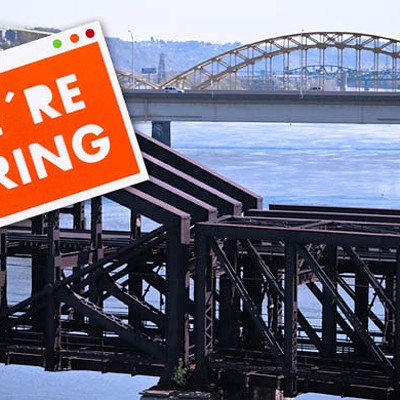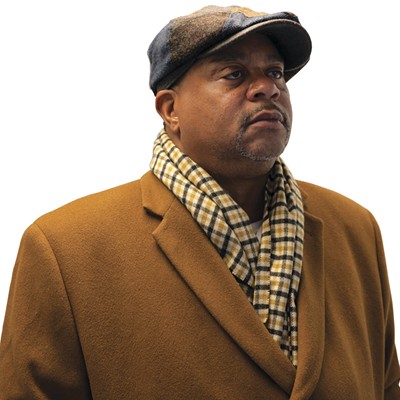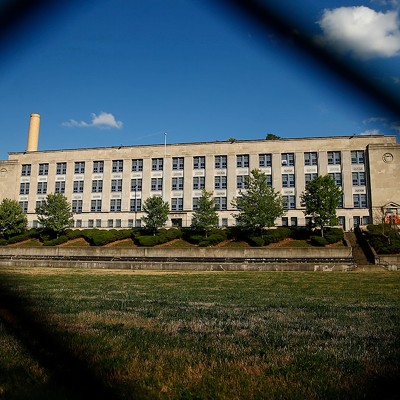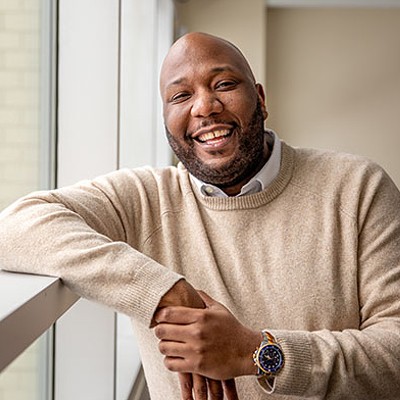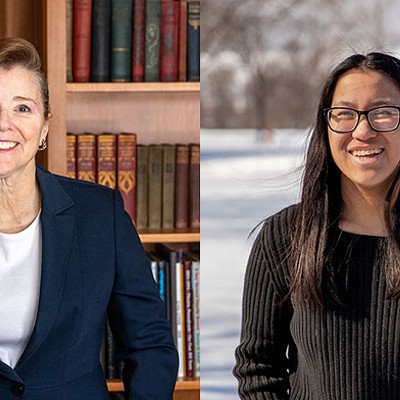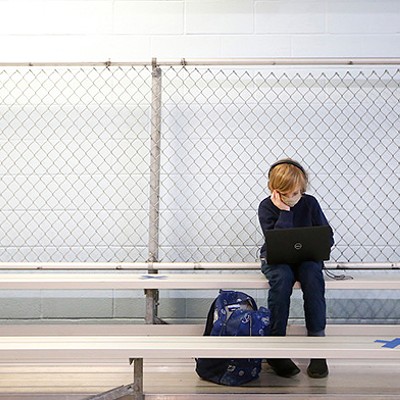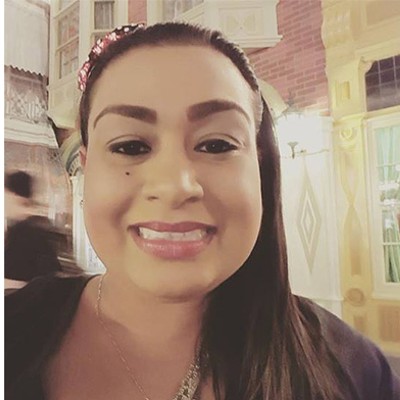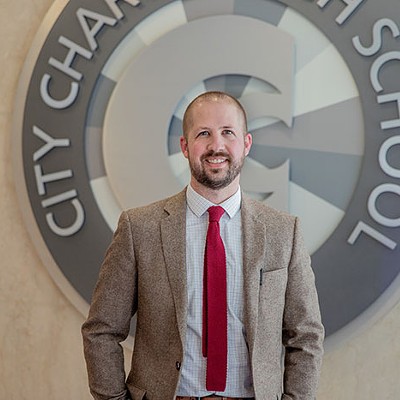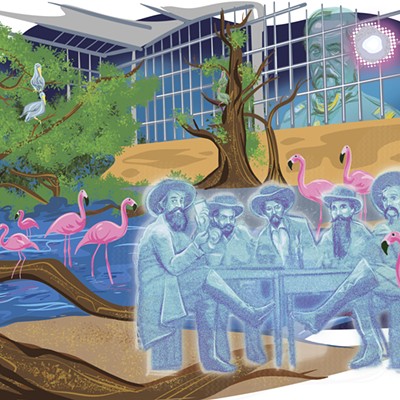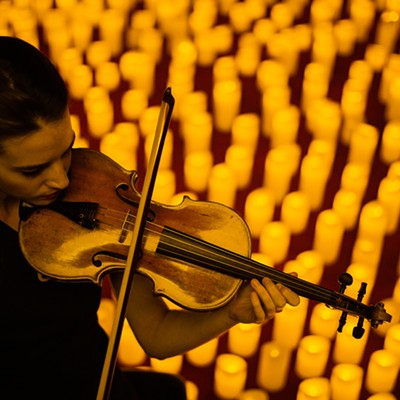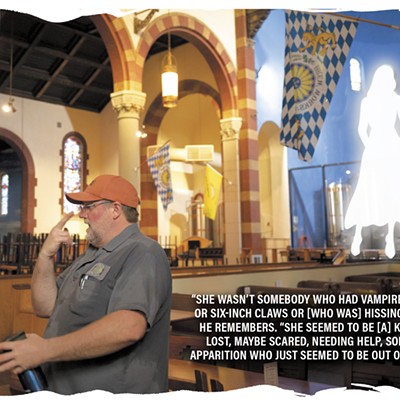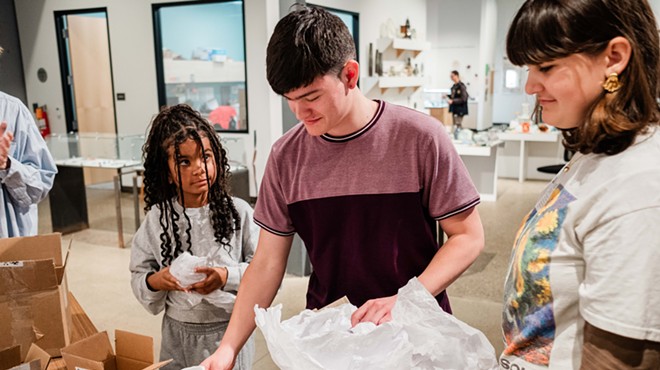Andrea Weinstein and her husband live in Central Lawrenceville with their 3-year-old daughter. Weinstein is from Chicago and her husband is from Albuquerque. The couple moved to Pittsburgh from the San Francisco Bay Area in 2009 to study at the University of Pittsburgh and have since decided to set down roots in the Steel City, purchasing a house in the popular East End neighborhood. Weinstein recognizes the role of families like hers in gentrifying neighborhoods, but also wants to stay and become an integral part of Lawrenceville, instead of just leaving the city to put her daughter in a suburban public school.
“People come here, they have a kid and then within a year, they move,” she says. “Some of us call it ‘The Lawrenceville Problem.’”
This phenomenon isn’t unique to Lawrenceville; it’s something that has been affecting American cities and urban school districts for decades. “White flight” of the 1960s saw mostly white families decamp cities to establish well-to-do suburbs, helped along by discriminatory housing practices in their favor. This led to a cascading effect of disinvestment and population loss in urban America.
That trend has begun to turnaround in many urban areas, with some cities, including Pittsburgh, now attracting new residents and investment. But that hasn’t yet translated to the growth of city school districts, including Pittsburgh Public Schools. Cities like Pittsburgh are also failing to retain many of their young families and people of color, who are either intentionally leaving or being displaced to the suburbs.
On Feb. 1, Pittsburgh Public Schools unveiled a proposal to close and consolidate several school buildings in an effort to close a $39.4 million budget deficit. After instantaneous blowback, the school board shelved that plan, but to many PPS parents who spoke to Pittsburgh City Paper, the proposal itself made them uneasy and pessimistic about the school district’s future.
Parents are now calling for better communication from PPS, and are asking for a better plan to address current budget problems and to lay out a potentially brighter future for the urban school district. Besieged by headlines portraying dysfunction within the school district and arguments with city officials, PPS says failure to pass a property tax increase put the administration in a tough spot financially, and the pandemic has made everything more difficult. Weinstein and other parents are all proponents and cheerleaders for urban public schools like PPS, but also recognize that, for the city and the entire region to succeed, the district must thrive and move beyond the perception that it is always failing and has a bleak future. They say keeping young families and people of color within the city is integral to ensuring that Pittsburgh succeeds.
“I do think PPS has more of a negative view than is warranted, but they need to recognize that, and that this [school closing proposal] is going to confirm some of that bias,” says Weinstein. “They need a strategic plan to showcase growth potential.”
Weinstein’s daughter is too young to currently be enrolled in PPS, but their plan was always to send her to public school in the city. Arsenal PreK-5 in Lawrenceville is her assigned school, but Wesintein says they are also looking at the Woolslair STEAM magnet program. Arsenal PreK-5 was not on the list of proposed school closures, but Arsenal Middle School was, as was Woolslair.
Having amenities, including public schools, that are walkable from their house in Lawrenceville, was a big reason the Weinsteins moved to the neighborhood. Both Weinstein and her husband are products of public school, and believe in them. But Weinstein says the idea of losing their school buildings has them questioning if PPS is right for them.
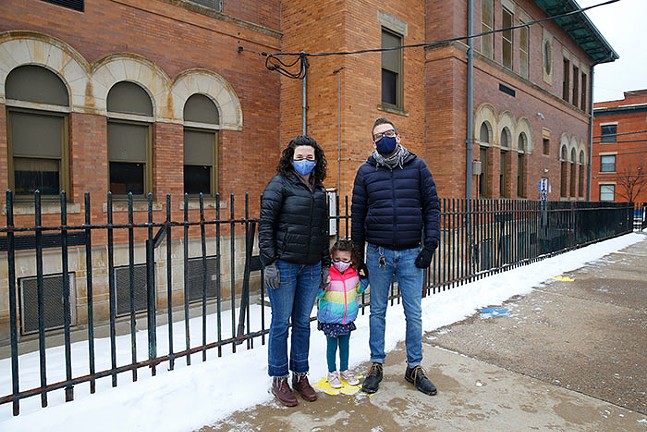
Potentially losing young families would only exacerbate Lawrenceville’s problems. The neighborhood has been quickly losing school-age children over the years. According to census estimates, Lawrenceville has lost 588 people under 18 years old between 2009 and 2018, a decrease of 38%. That’s faster than the city of Pittsburgh as a whole, which has decreased its school-age population by 8.4% over the same time period.
However, the neighborhood is rapidly growing the population of residents that could start young families. Between 2009 and 2018, Lawrenceville has added 874 residents between 25-44 years old, which is more than double the city’s overall growth rate of 25-44 year olds.
Amber Thompson lives in Lawrenceville and has a daughter attending the Linden K-5 magnet school. She is part of a collective of Black women, parents, educators, former educators, and other stakeholders called Black Women for Better Education.
She is supportive of the Community Schools program, which was launched in 2017 as a partnership between PPS schools and community resources to “offer programs which focus on academics, enrichment, health and social supports, youth and community development, and family engagement,” according to the PPS website.
It was expanded to eight schools in 2019, but Thompson says the progress of the Community Schools program is “non-existent” and that the program is something PPS should be doing better, as it would help positively distinguish itself from other school districts in the region.
“The district does not do partnerships well,” says Thompson. “Once you look into it, those partnerships are just on paper.”“I have had so many conversations urging people to stay. In order to grow the city, and county, you need a good functioning public school district.”
tweet this
PPS spokesperson Ebony Pugh says the PPS board is expected to authorize a grant proposal to the federal government that, if approved, would support PPS’s Community Schools programs at Langley K-8 and Milliones 6-12. Pugh says the successful implementation of the Community Schools program is dependent on grant money or acquiring other funding.
The PPS board is currently in a battle with the city over other potential revenue and has a nearly $40 million budget deficit. The board recently called for the city of Pittsburgh “to cease the collection of $20 million per year of Earned Income tax revenue levied by the School District but taken by the City when it was financially distressed.” Meanwhile, Pittsburgh Mayor Bill Peduto has continued to say that the city is entitled to that tax diversion, and has called for PPS to enter into state financial oversight. The back-and-forth doesn’t appear to be going away, as advocacy groups have also joined the call for the city to cease the tax diversion away from PPS.
Thompson supports the city giving the tax diversion back to PPS, but also wants the school district to address internal budgetary concerns, saying the tax diversion can’t be the sole excuse for PPS’s financial problems. She adds that there is a myriad of issues the school district and city could be tackling together — like organizational issues within the district, running the community schools program collaboratively, etc. — and that “there is enough blame to go around.”
“My problem with the school closures is there is no strategy, there is no communication, then the school district puts the blame on the buildings,” says Thompson, referencing the district’s statement that some older buildings, like Woolslair and Montessori in Friendship are too costly for PPS to upkeep.
Pugh says PPS understands the confusion many families are now feeling. PPS Superintendent Anthony Hamlet was supportive of a property tax millage increase that would help to close PPS’s budget deficit, and Pugh says that when the board voted against that increase, the district moved out of financial compliance, “thus expediting the need to reduce our expenditures by leveraging one-time cost savings and through reductions in our workforce and [the PPS] footprint.”

“There was zero intent to blindside the community,” says Pugh. “It is important to understand that the District and its leadership would not close schools without community input and direction.” She also adds that the school district's main focus has been trying to figure out how best to reopen in-person learning, since PPS has been remote teaching virtually for the entirety of the pandemic. Pugh says this has taken up considerable bandwidth for administrators.
A request for comment to the PPS board spokesperson was not returned.
All four parents CP spoke to said they were not opposed to a millage increase, as long as it was transparent and communicated with them.
Cristina Ruggiero of Squirrel Hill is also frustrated with the level of communication. Her daughter attends Colfax K-8. She, like Weinstein, chose to live in her neighborhood so she could walk to school and be a part of the community. She is also supportive of the community schools program and is worried the school district is sending the wrong message when proposing school closures and showcasing financial distress. She says the walkability of public schools is something many suburban school districts can’t offer.
Even so, Ruggiero says it’s already a struggle to convince families to stay in the city, and the school district’s issues aren’t making it easier.
“I have had so many conversations urging people to stay,” says Ruggiero. “In order to grow the city, and county, you need a good functioning public school district. Other entities need to understand how important this is and provide support.”
Pugh says PPS has made modest investments to increase the district’s marketing, including the redesign of its website, as well as advertisements on television, radio, online, and print to promote key enrollment dates and the Imagine PPS process, the district’s new strategic plan.
“We continue to look for new and innovative ways to tell the district’s story,” says Pugh.
Thompson is also frustrated with any lack of growth strategy. She adds that any strategy must start with attracting and retaining Black families and families of color in the district. PPS is currently made up of 53% Black students, despite being in a city that is 67% white overall. Thompson says failures to invest in Black families will contribute to them leaving the school district entirely, and that can hurt Pittsburgh and the region’s future.
“None of these neighborhoods are sustainable without families,” says Thompson. “Pittsburgh will not be moving into the future if it remains homogeneous.”
Sara Novelly lives in the Observatory Hill area of the North Side, and says one thing that makes PPS more attractive than other school districts is its diversity. She is white and a graduate of the former Schenley High in Oakland and says her experience with a diverse student body was a “wonderful experience and it shaped me.”
“I wanted to have that for my son,” says Novelly, whose son attends Allegheny K-5 in the North Side. “It was really important to me.”
Novelly says PPS teachers have been working really hard and it’s clear the staff really cares a lot about the students. She says PPS gets a bad rap in the region, but adds that all the district’s publicized strife is only going to perpetuate its negative reputation.
“We are supposedly this growing thriving city, but then if you look closer at our school district, that does not make it look any better,” says Novelly. “You want it to be on an upward trajectory. Young professionals are moving in, and then they move out because they are scared of the school district. I have seen it anecdotally.”

